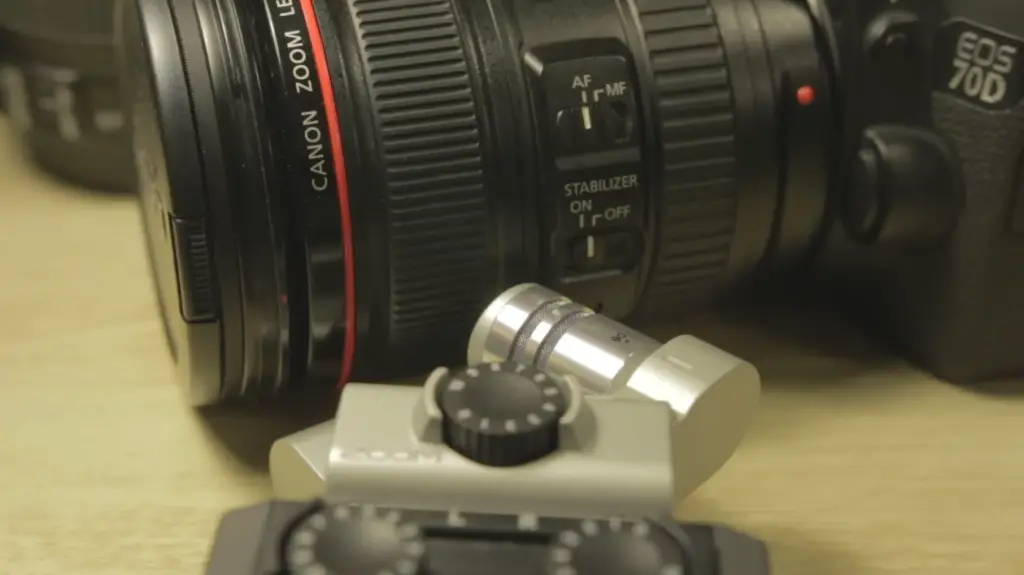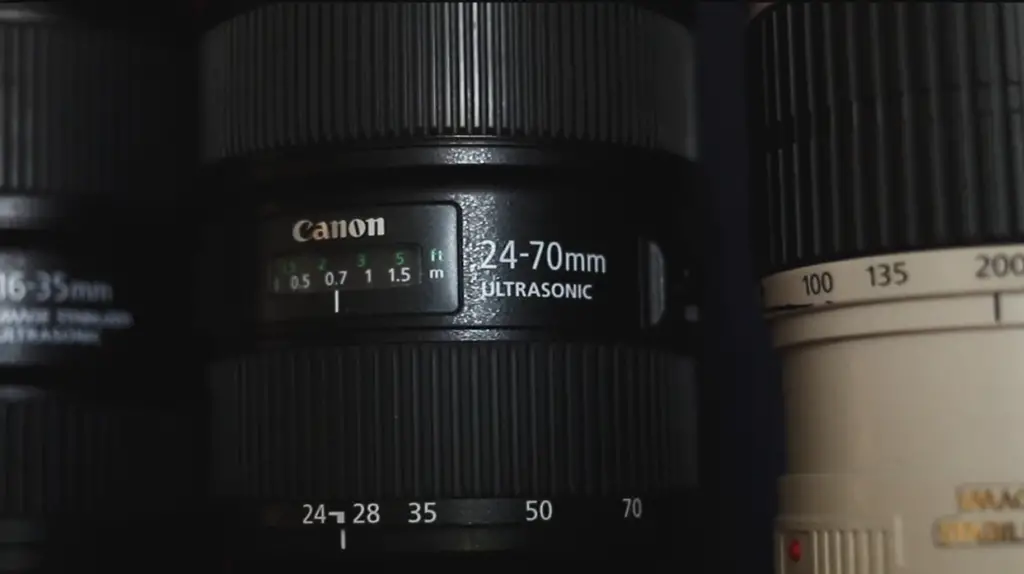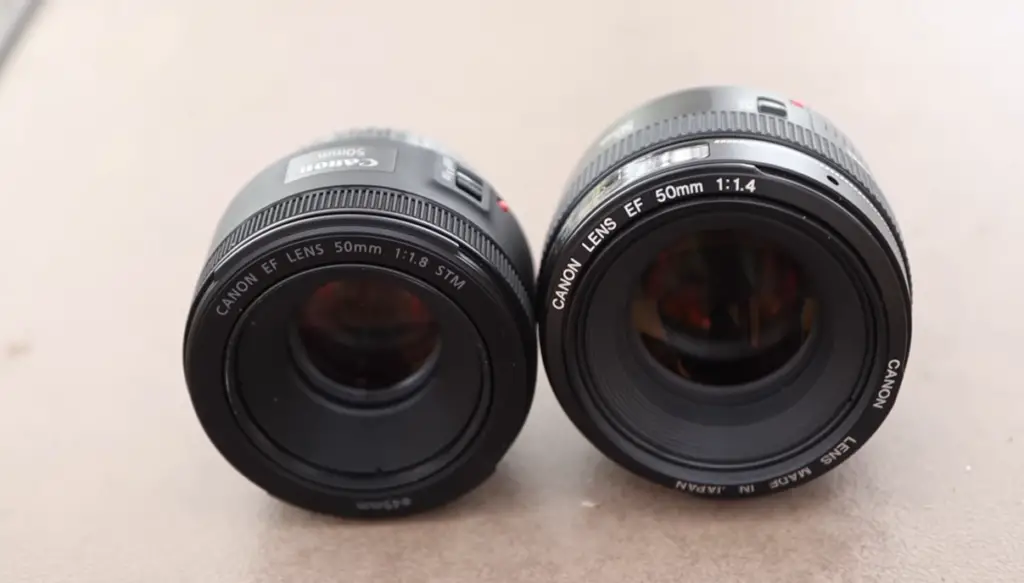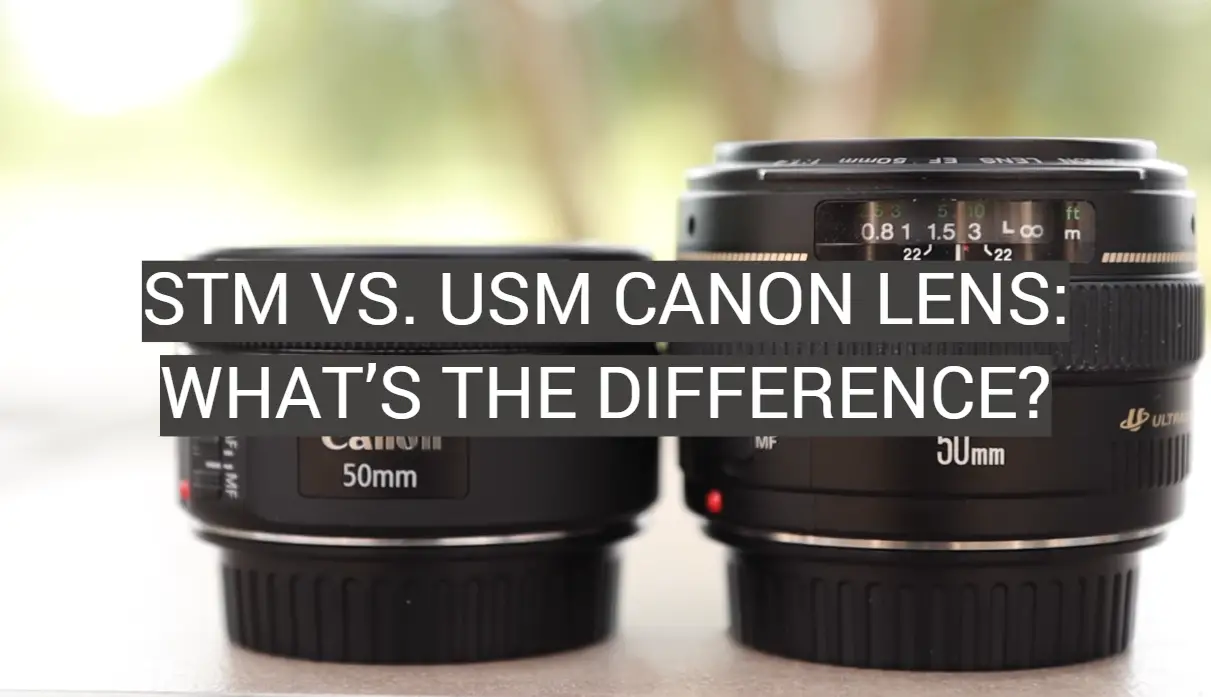Do you want to buy a Canon lens but don’t know which one? In this article, we will compare and contrast STM and USM lenses. We will answer some of the most common questions people have about these two types of lenses, such as “What’s the difference in sound?” and “Which is better for video recording?” By the end of this article, you will be able to make an informed decision about which type of Canon lens is best for your needs.
Canon Focusing Systems
Before we get into the nitty-gritty of STM and USM, let’s first take a step back and understand Canon’s different focusing systems. Like most other camera manufacturers, Canon offers two main types of lens autofocus: phase detection AF (which they call “AF-S”), and contrast detection AF (which they call “AF-C”).
Canon’s phase detection autofocus system is used in their DSLRs, and it relies on a separate autofocus sensor that’s built into the camera. This system is very fast and accurate, making it great for capturing moving subjects. It’s also worth noting that phase detection AF is not possible with adapted lenses (i.e. lenses from other brands that are used with a Canon camera body), which is one of the main reasons why contrast detection AF is used in Canon’s mirrorless cameras.
Contrast detection autofocus works by analyzing the image that’s being captured by the sensor, and it can be used with both native and adapted lenses. This system is typically slower than phase detection AF, but it has the advantage of being able to focus on very small subjects (like insects). It’s also worth noting that contrast detection autofocus is not possible with certain types of lenses, such as those with very large apertures (e.g. f/0.95).
The main mechanism used in Canon’s autofocus system is a focus motor. This is what actually moves the lens elements in order to achieve sharp focus. Canon offers two main types of focus motors: STM and USM. And now that we’ve covered the basics of Canon’s different focusing systems, we shall take a closer look at them! [1]

USM (Ultrasonic Motor) in General
USM lenses use a motor that creates high-frequency vibrations to move the focusing lens. The main advantage of this technology is that it’s very fast and precise, making it ideal for sports and action photography. USM lenses are also generally quieter than STM lenses, which can be important if you’re shooting video.
Types of USM Canon Lenses
Ring type USM lenses are the most common and offer the best performance. They’re constructed with two metal rings, on the focusing system and the barrel. The vibrations caused by one ring make the other ring rotate, which moves the focusing lens. This type of lens features FTM (full-time manual) focus, meaning you can override the autofocus by turning the focusing ring at any time.
Micro type USM lenses are similar to ring type USM lenses, but they’re smaller and lighter. They are composed of gears that mesh with each other to rotate the focusing lens. These lenses do not have FTM and may be noisier, but they aren’t limited by the size of the lens barrel like nano type USM lenses are.
Nano type USM lenses are the newest type of USM lens and use a piezoelectric motor to create vibrations. The advantage of this is that it doesn’t need gears, which makes it smaller and lighter than micro type USM lenses. Nano type USM are very silent without compromising on speed or precision. However they require focus-by-wire, meaning the focus ring is connected to the motor electronically and you can’t override the autofocus like you can with ring type and micro type USM lenses. [1], [2]
Main advantages of USM lenses
USM lenses are popular for a reason and that’s because they offer some big advantages over STM lenses. Let’s take a look at them!

Focusing Speed
Because the ultrasonic motor creates high-frequency vibrations that quickly move the focusing lens into place, USM lenses have incredibly high focusing speeds. This makes USM lenses ideal for sports and action photography where you need to be able to capture fast-moving subjects without missing a beat.
Tactile Manual Focusing
Another of the advantages that USM lenses have over STM lenses is that they offer tactile manual focusing.
This is especially useful for photographers who shoot video with their DSLR cameras, as it allows for smooth and precise focus pulls.
Quiet manual focus
Another big advantage of USM lenses is that they are generally much quieter than STM lenses when it comes to manual focus. This can be important if you’re shooting video since you don’t want your audio to be interrupted by the sound of your lens trying to focus on something.
Used in top Canon lenses
Because of the reasons we mentioned above, USM lenses are used in Canon’s best lenses. So, if you want the best image quality possible, then you’ll need to look for a USM lens.
These lenses are designed for professional photographers and offer the best build quality, image quality and features. If you’re serious about photography, then you’ll need to invest in an L-series lens. [1], [2], [3]

Disadvantages of USM Lenses
Still, USM lenses aren’t perfect and there are a few disadvantages that you should be aware of before you buy one.
Noisy autofocus
One of the disadvantages of USM lenses is that they can be noisy when they autofocus. Of course when shooting pictures this usually won’t be an issue since the sound of the shutter will mask the noise of the autofocus. However, if you’re shooting video this can be a problem since you don’t want your audio to be interrupted by the sound of your lens trying to focus on something. One way to get around this is to use manual focus instead of autofocus, but this isn’t always possible or practical.
Abrupt rack focus
Another disadvantage of USM lenses is that they can sometimes cause abrupt rack focus.
This can be jarring for viewers and is something that you should avoid if possible.
If you’re shooting video, then you should try to smooth out your focus pulls as much as possible. This can be done by using a follow focus system or by manually focusing the lens yourself.
Another way to avoid abrupt rack focus is to use Canon’s dual pixel autofocus system. This system uses phase detection pixels on the sensor to help the camera quickly and accurately focus on subjects.
High price
Obviously, the biggest disadvantage of USM lenses is their high price. USM lenses are often twice as expensive as STM lenses, which can make them out of reach for many photographers.
If you’re on a budget, then you’ll probably want to stick with an STM lens. However, if you can afford it, then a USM lens will be worth the investment.
For example, Canon EF 50mm f/1.8 STM Lens come at a price of $125, while similar Canon EF 85mm f/1.8 USM cost $500. [1], [2], [3], [4], [5]

STM (Stepping Motor) in General
They are designed to be affordable and easy to use, with features that make them ideal for first-time DSLR users. STM lenses use a stepping motor technology that is quiet and smooth, making them ideal for video recording.
This allows for smoother and quieter autofocus when recording video with your Canon DSLR camera. STM lenses are also ideal for live view shooting, as they provide near-silent focusing performance.
Types of STM Canon Lenses
STM lenses come in two types: the gear-type STM and the lead screw-type STM.
Gear-type STM lenses have a toothed gear that is used to drive the focus mechanism. These aren’t as popular as the lead screw-type STMs because they tend to be noisier.
Lead screw-type STM lenses have a smooth lead screw that is used to drive the focus mechanism. These are the way to go for most photographers because they’re quieter and smoother than gear-type STMs.
You won’t need to worry about struggling to find the right STM lens for your Canon DSLR because there is a large selection of STM lenses to choose from. You can find STM lenses for every type of photography, including wide-angle, portrait, and telephoto. Let’s take a look at some examples.
- Canon EF 35mm f/1.4L USM
- Canon EF 17-40mm f/4L USM
- Canon EF 70-200mm f/4L IS II USM
- Canon EF 24–105mm f/4L IS II USM
As you can see, there are some premium STM lenses available from Canon.

Advantages of STM Canon Lenses
There are plenty of things to like about STM Canon lenses if you are a beginner photographer. We shall discuss them in detail.
Smooth Focus
The primary advantage of STM over USM is the smooth rack focus. When you are recording a video, for example, and panning from one subject to another, an STM lens will smoothly change the focus without any jerks. This is not the case with lenses that use USM, which can often be heard in videos as they hunt for focus before finally settling on the desired subject.
This is a great feature if you are looking to do a lot of video work with your Canon DSLR camera.
STM lenses also tend to be smaller and lighter than their USM counterparts, making them more portable and easier to carry around with you.
Quiet AF
Next advantage that STM has over USM is that it is much quieter. When you are recording a video, the last thing you want is for your lens to make noise as it autofocuses. This can be very distracting, and it can ruin the audio quality of your video. With an STM lens, you won’t have to worry about this problem. The motor technology that these lenses use results in near-silent autofocus performance, so you can focus on your video without worrying about the noise.
For this reason, STM lenses have a clear advantage over USM lenses when it comes to video recording. If you are planning on doing a lot of video work with your Canon DSLR, then an STM lens is a good choice.
Silent lenses will not only be useful in video shooting, but also if you plan on taking some pictures of wildlife or in any other situation where you need to be quiet.
Affordable price
Lastly, STM lenses tend to be more affordable than their USM counterparts. This is because they use a less expensive focusing motor. This makes them a great option for those who are just starting out with DSLR photography and don’t want to spend a lot of money on lenses. [1], [2], [3]
Disadvantages of STM Lenses
Just like with everything else, STM lenses also have a few disadvantages. We believe the following factors won’t be a huge deal breaker for amateur photographers but might for professionals.
Slower autofocus time
One of the biggest disadvantages of STM lenses is that they have a slower autofocus time than USM lenses. This can be a problem if you are trying to take pictures of fast-moving subjects, or if you need to quickly change the focus from one subject to another. If you are mostly going to be taking pictures of static subjects, then this won’t be a big deal. But if you plan on doing a lot of action photography, then an STM lens might not be the best choice.
Delayed manual focus
Similarly, STM lenses also have a delayed manual focus. This means that when you try to manually focus the lens, there can be a slight delay before the lens actually starts to focus. This is because the STM motor has to first disengage before the manual focusing mechanism can take over.
This can be frustrating if you are trying to quickly capture a shot and don’t have time to wait for the lens to start focusing. However, it is not a huge problem, and you will get used to it after using your STM lens for a while.
Cheaper lens quality
The last disadvantage of STM lenses is that they are not as high quality as USM lenses. This is to be expected, since STM lenses are designed to be more affordable than their USM counterparts. They may be not as durable as their USM counterparts, and they are more likely to break or suffer from wear and tear over time. So, if you are looking for a lens that is going to last you a long time, then you might want to consider spending the extra money on a USM lens. [1], [2], [3]

How are USM Better Than STM
Now you know the advantages and disadvantages of both lenses, but how do they compare? Here are some key factors to consider.
USM lens are faster than STM
Just like we already talked about, USM lenses have a much faster focus. This is due to the fact that they have their own motor inside the lens. STM on the other hand relies on your camera’s motor to focus which can sometimes be slower.
USM lens have better manual focus
If you are shooting video or taking pictures of fast moving objects, then you will definitely want a USM lens because of how smooth the focus is. You also won’t have to worry about the noise, since USM manual focus is pretty quiet! [1], [2], [3]
How are STM Better Than USM
That doesn’t mean STM is a bad lens, it has its own advantages over USM lenses as well!
STM lens have smoother rack focus
If you are shooting video, then you will want to get an STM lens. This is because STM lenses have a smoother rack focus. This means that your footage will look more professional since the focus will be changing gradually instead of abruptly.
They don’t pick up camera focusing sounds
Video shooters will definitely want to go for an STM lens for one extra reason, because they don’t pick up any camera focusing sounds. This is due to the fact that they don’t have a motor inside the lens, so all you will hear is the natural sound of your subject.
They are perfect for beginners
STM lenses are perfect for beginners because they are so easy to use and affordable. You don’t have to worry about the focus being too fast or too slow, it will always be just right for your needs. [1], [2], [3]
FAQ
How do you know if a lens is STM?
The easiest way to tell if your Canon lens is STM or USM is to look at the name of the lens. If the name of the lens includes either “STM” or “USM,” then that’s an indication of which type of motor it has. You can also usually tell by looking at the front of the lens. There should be a label that says either “STM” or “USM.”
Why are USM lenses more expensive?
USM lenses are more expensive than STM lenses for a few reasons. First, USM lenses have a more complex focusing system. This means that they can focus more quickly and accurately than STM lenses. Second, USM lenses usually have better build quality than STM lenses. This results in a lens that is less likely to break or malfunction over time. Finally, USM lenses often come with features like weather-sealing and image stabilization, which add to the overall cost of the lens.
What does USM mean on Canon lenses?
It’s used in the lenses themselves to provide quick and accurate autofocusing. USM lenses are usually faster than other types of Canon lenses, making them a good choice for shooting video or taking pictures in areas where silence is important.
They are also the way to go for professional photographers who need to focus quickly and precisely.
What is an STM lens used for?
STM lenses are used for both still images and video. The STM designation stands for “stepping motor,” which helps to produce smooth and quiet autofocusing while shooting video with Canon DSLRs.
USM lenses, on the other hand, are designed primarily for still photography. USM stands for “ultrasonic motor,” which is a type of focusing mechanism that is fast, precise, and relatively quiet. However, because they are not specifically designed for video recording, USM lenses may exhibit some focus hunting when trying to shoot video with a Canon DSLR.
What does STM mean on a Canon lens?
STM stands for Stepping Motor technology. This type of motor is used in Canon lenses to provide smooth and quiet autofocus performance. STM lenses are typically more affordable than USM lenses, and are a good choice for entry-level photographers or anyone who wants to avoid making too much noise when photographing.
USM stands for Ultrasonic Motor technology. This type of motor is used in Canon lenses to provide fast and accurate autofocus performance. USM lenses tend to be more expensive than STM lenses, but they are worth the investment if you need the extra speed and precision.
Useful Video: Whats the difference between USM and STM?
Conclusion
Both STM and USM lenses are great choices, and which one you choose really depends on your needs. The main difference between STM and USM is the way in which they focus on subjects. STM lenses use a stepping motor for focusing, which is a type of electric motor that turns in discrete steps. This makes STM lenses very quiet, which is great for video applications. USM lenses, on the other hand, use an ultrasonic motor for focusing. This type of motor uses high-frequency sound waves to achieve focus, and it’s able to do so very quickly.
If you need a fast, quiet lens for video shooting, STM is the way to go. If you need a fast, accurate lens for action or sports photography, USM is the better option. And if you’re just starting out with Canon DSLRs, STM lenses are a great entry-level choice. USM lenses on the other hand are a go-to option for professional photographers. However, keep in mind that such quality comes at a price. In addition, USM lenses will pick up more sound when autofocusing, so if you’re shooting video with a USM lens, you may need to use an external microphone to avoid picking up the lens’ focusing noise. We hope you enjoyed this article and found it helpful. If you have any questions or comments, please feel free to leave them below. And if you want to learn more about cameras and lenses, be sure to check out our other blog posts! Thanks for reading!
References
- https://www.phototraces.com/b/canon-stm-vs-usm-lens/
- https://www.bwillcreative.com/canon-stm-vs-usm-whats-the-difference/
- https://juicedlink.com/stm-vs-usm-lens/
- https://www.amazon.com/Canon-STM-Lenses/s?k=Canon+STM+Lenses
- https://www.amazon.com/Canon-USM-Camera-Lenses/s?k=Canon+USM+Camera+Lenses












Leave a Reply